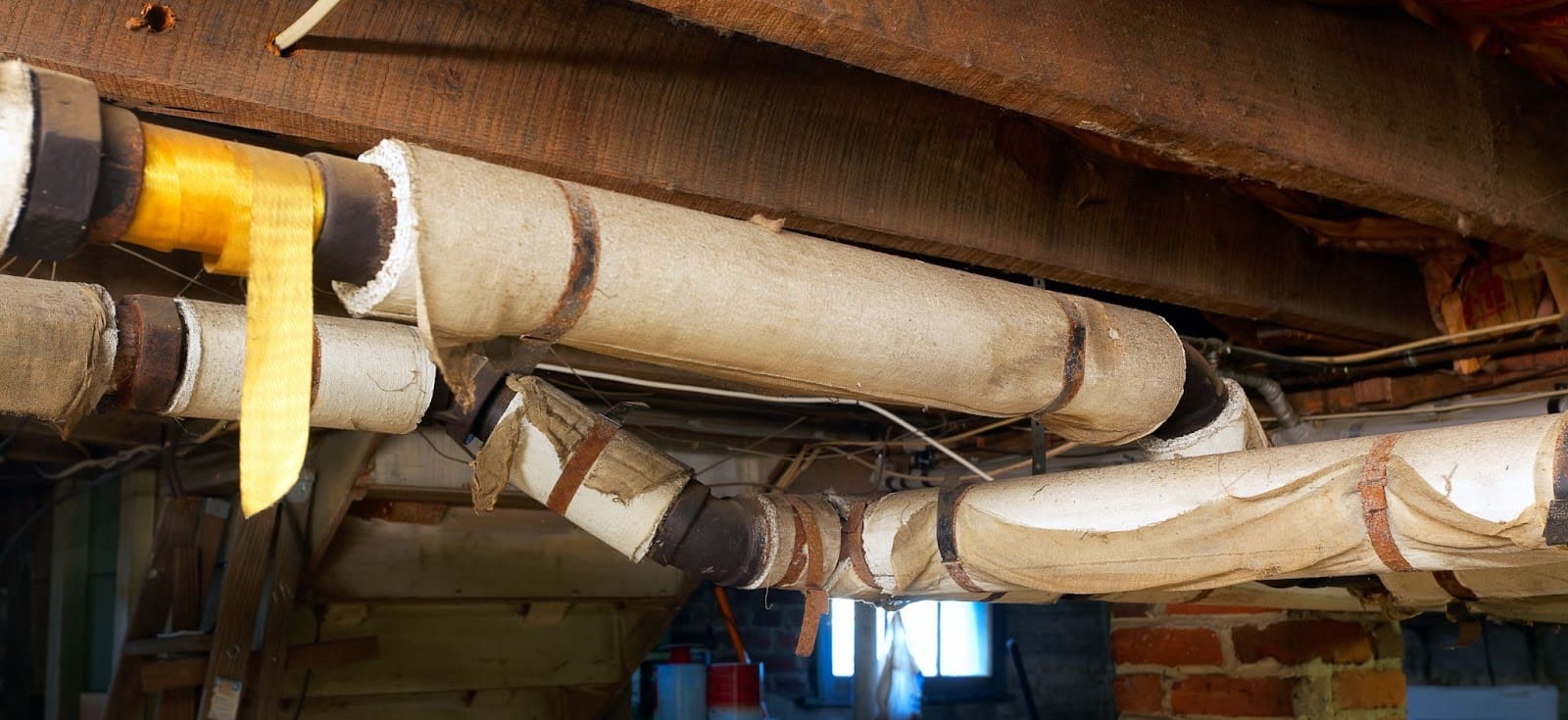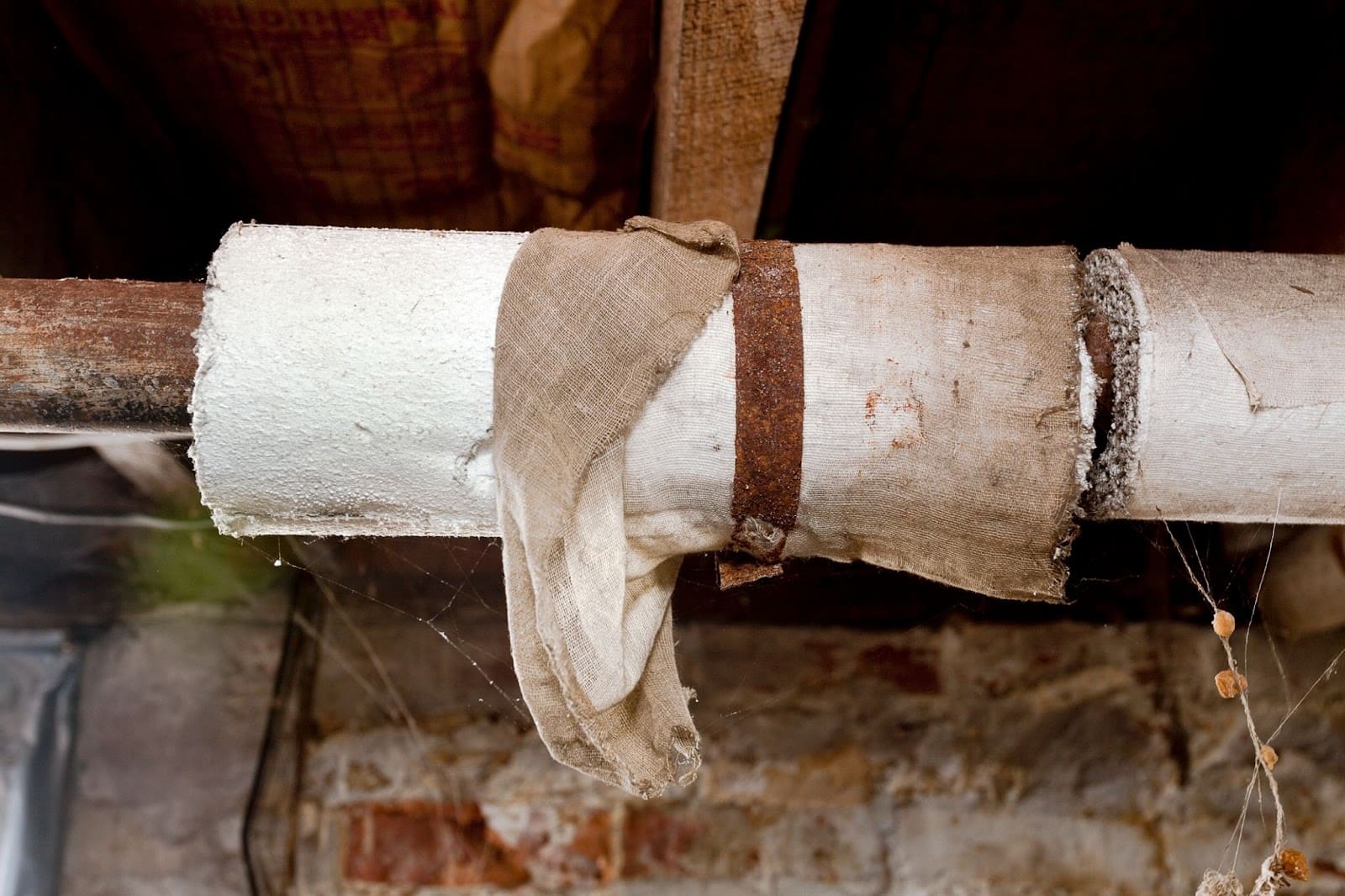Many older homes and buildings throughout Wisconsin still contain outdated thermal system insulation—especially around basement pipes—that could include asbestos pipe insulation. Once praised as a "miracle mineral" for its heat resistance and durability, asbestos is now recognized as a dangerous threat to human health. If you plan to install or upgrade a thermal system, it’s crucial to understand how to identify asbestos insulation and when to call professionals for asbestos pipe insulation removal.
Why Is Asbestos on Basement Pipes So Dangerous?

Asbestos was once commonly used in pipe insulation, blanket insulation, and other thermal products to prevent heat loss in homes, factories, and public buildings. Unfortunately, these materials can become brittle with age, turning into friable asbestos that easily crumbles and releases microscopic fibers into the air. These toxic asbestos fibers, when inhaled, can become lodged in the lungs, leading to serious health risks such as asbestosis, lung cancer, and mesothelioma—a rare but deadly cancer.
Basements are especially concerning because of limited ventilation and damp conditions that accelerate material breakdown. If you're living in or renovating an older building, any asbestos insulation found on hot water or steam pipes could pose immediate danger, especially during mechanical repairs or demolition.
How to Identify Asbestos Insulation on Thermal Systems
Identifying asbestos insulation isn't easy. It often appears as a white, gray, or silvery-gold wrapping or plaster-like coating around pipes, elbows, or boilers. Some older insulation may look like cotton candy or have a slight shine. But appearance alone isn't enough—materials like fiberglass insulation, rock wool, or recycled paper can appear similar.
Many insulation types—such as vermiculite insulation or loose fill from sources like the Libby Mine—were contaminated with tremolite, a hazardous asbestos. The only reliable way to determine the presence of asbestos-containing materials is through certified environmental services and lab testing. Never attempt to remove or disturb suspicious material yourself; even a small amount of asbestos dust can lead to asbestos exposure and lasting health problems.
The Risks of DIY and Improper Handling
The idea of a do-it-yourself fix tempts some homeowners. However, disturbing home asbestos insulation without proper precautions is illegal in many states and highly unsafe. According to the Environmental Protection Agency (EPA), you should never attempt to remove asbestos without licensed professionals. Improper handling can contaminate your utility rooms, HVAC systems, and other areas with asbestos fibers, putting your family, construction workers, and neighbors at risk.
Certified abatement technicians use methods like plastic sheeting barriers, air filtration, and specialized vacuums to safely remove insulation. If you plan to upgrade your heating system or make changes to pipes, hiring a licensed asbestos abatement company is essential for complying with federal regulations and protecting public health.
What Is the Asbestos Pipe Insulation Removal Process?
Advanced Health and Safety, our asbestos abatement process begins with thoroughly inspecting your home’s thermal system insulation. We use certified techniques and equipment to assess the condition of asbestos-containing products and determine the safest removal method.
The removal process includes:
- Sealing off the affected area using plastic sheeting
- Employing negative air pressure and air scrubbers to capture airborne fibers
- Carefully removing and bagging hazardous materials
- HEPA vacuuming and post-removal air testing
- Safe disposal in compliance with federal laws
After abatement, our team will help you restore your system with safe, modern insulation products that offer improved energy efficiency, without the health hazards.
Protect Your Family with Professional Asbestos Remediation

Don’t let outdated insulation jeopardize your safety. Whether you’re renovating, selling a home, or upgrading your boiler system, addressing asbestos in basement pipes should be your top priority. Asbestos pipe insulation removal is more than a maintenance issue—it's a matter of long-term health and legal responsibility.
Advanced Health and Safety proudly serves Madison and surrounding communities with certified asbestos remediation for heating systems, including safe, compliant thermal system insulation asbestos removal. Our experienced team follows strict EPA guidelines to protect your indoor air, home, and loved ones.
Schedule an Inspection Today

If you suspect asbestos insulation in your basement or around heating pipes, don’t wait. Schedule a professional inspection with Advanced Health and Safety to confirm the presence of asbestos materials and plan for safe removal.
Contact us today to learn more about our asbestos abatement services or to schedule a no-obligation consultation.
🧯 Asbestos on Basement Pipes FAQ
- How do I know if my basement pipe insulation contains asbestos?
Asbestos insulation often resembles white, gray, or tan wrapping, plaster-like coating, or fluffy “cotton candy” material. The only way to confirm is through lab testing by a certified asbestos inspector—never assume based on appearance alone. - Is it dangerous to touch or bump old insulation on pipes?
Yes. Aging asbestos insulation can become friable, easily crumble, and release harmful fibers into the air. Even minor contact or disturbance can lead to asbestos exposure and serious health risks. - Can I remove asbestos pipe insulation myself?
No. DIY asbestos removal is not safe and may be illegal. Only licensed asbestos abatement professionals should handle, remove, or dispose of asbestos-containing materials. Improper handling puts your household and the environment at risk. - What is the proper way to remove asbestos insulation?
Professional abatement includes:- Sealing off the area with plastic sheeting
- Using negative air machines and HEPA filtration
- Safe removal, double-bagging, and disposal
- Post-removal air testing to ensure safety
- How much does asbestos pipe insulation removal cost?
Costs vary depending on the extent of contamination, location, and accessibility of the materials, but most residential projects range from $1,000 to $3,000+. It’s a worthwhile investment in your family’s health and home value. - What should I do if I see suspicious insulation on my pipes?
Avoid touching or disturbing the material. Contact a certified asbestos inspection or abatement company like Advanced Health and Safety for testing and removal. - Is asbestos on pipes still legal?
No new asbestos-containing pipe insulation is allowed in residential settings. However, many older buildings still contain it. Federal and state laws regulate how it must be handled and removed. - What happens after asbestos is removed?
After safe removal, your contractor will replace it with modern, non-toxic insulation that improves energy efficiency while keeping your thermal system secure and compliant. - Why is basement pipe insulation such a concern?
Basements are often damp, poorly ventilated, and subject to repairs or renovations—conditions that can cause asbestos to break down and spread fibers if not handled properly. - Can asbestos exposure from basement pipes affect my entire home?
Yes. Airborne fibers can travel through HVAC systems or on clothing and tools, contaminating other rooms. This is why professional containment and cleanup are critical.
